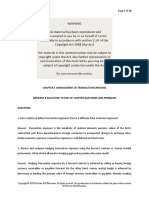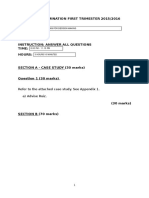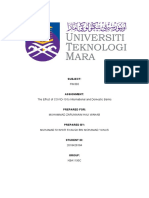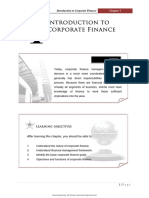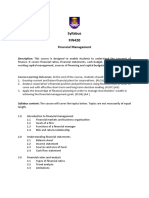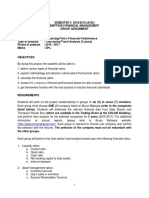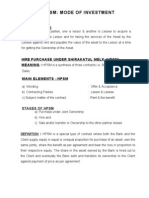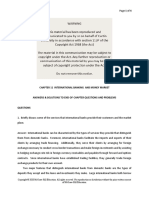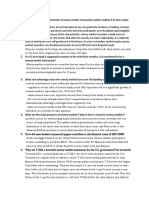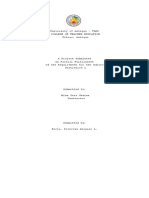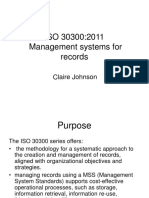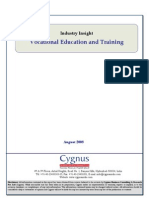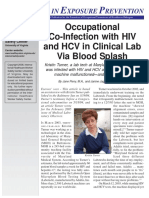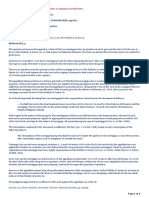FIN426
CHAPTER 11
INTERNATIONAL BANKING AND MONEY MARKET
1. Briefly discuss some of the services that international banks provide their customers
and the marketplace.
Answer:
International banks can be characterized by the types of services they provide that
distinguish them from domestic banks.
1. Foremost, international banks facilitate the imports and exports of their clients by
arranging trade financing.
2. Additionally, they serve their clients by arranging for foreign exchange necessary to
conduct cross-border transactions and make foreign investments.
3. By assisting in hedging exchange rate risk in foreign currency receivables and payables
through forward and options contracts. Since international banks have established trading
facilities, they generally trade foreign exchange products for their own account.
4. Two major features that distinguish international banks from domestic banks are the types
of deposits they accept and the loans and investments they make. Large international banks
both borrow and lend in the Eurocurrency market.
5. Moreover, depending upon the regulations of the country in which it operates and its
organizational type, an international bank may participate in the underwriting of Eurobonds
and foreign bonds.
6. International banks frequently provide consulting services and advice to their clients in the
areas of foreign exchange hedging strategies, interest rate and currency swap financing, and
international cash management services.
Not all international banks provide all services. Banks that do provide most of these services
are known as full-service banks.
2. How does the deposit-loan rate spread in the Eurodollar market compare with the deposit-
loan rate spread in the domestic U.S. banking system? Why?
Answer:
Competition has driven the deposit-loan spread in the domestic U.S. banking system to
about the same level as in the Eurodollar market. That is, in the Eurodollar market the
�deposit rate is about the same as the deposit rate for dollars in the U.S. banking system.
Similarly, the lending rates are about the same. In theory, the Eurodollar market can operate
at a lower cost than the U.S. banking system because it is not subject to mandatory reserve
requirements on deposits or deposit insurance on foreign currency deposits.
3. What is the difference between the Euronote market and the Eurocommercial paper
market?
Answer:
Euronotes are short-term notes underwritten by a group of international investment or
commercial banks called a “facility.” A client-borrower makes an agreement with a facility to
issue Euronotes in its own name for a period, generally three to 10 years. Euronotes are
sold at a discount from face value and pay back the full-face value at maturity. Euronotes
typically have maturities of from three to six months.
Eurocommercial paper is an unsecured short-term promissory note issued by a corporation
or a bank and placed directly with the investment public through a dealer. Like Euronotes,
Eurocommercial paper is sold at a discount from face value. Maturities typically range from
one to six months.
4. What were the major features of the Basel III accord?
Answer:
Basel III was designed to substantially strengthen the regulatory capital framework and
increase the quality of bank capital. Under Basel III, Tier I capital is redefined to include only
common equity, retained earnings (i.e., eliminating non-redeemable, non-cumulative
preferred stock), and capital instruments with no fixed maturity. Tier II capital is redefined to
include subordinated debt and loan-loss reserves. Tier I capital is increased to 4.5 percent.
Additionally, the committee introduced a 2.5 percent capital buffer that can be drawn down in
periods of financial stress. The 2.5 percent buffer brings Tier I capital to 7 percent and total
capital to 10.5. These reforms were scheduled for implementation on January 1, 2019. In
addition, global systemically important banks are required to have higher loss absorbency
capacity to reflect the greater risks these banks pose to the financial system.
Problems
� 1. Grecian Tile Manufacturing of Athens, Georgia, borrows $1,500,000 at six-month
CME Term SOFR plus a Bank Credit premium of 0.43 percent and a lending margin
of 0.80 percent per annum on a six-month rollover basis from a London bank. If six-
month CME Term SOFR is 2.50 percent over the first six-month interval and 3.375
percent over the second six-month interval, how much will Grecian Tile pay in
interest over the first year of its Eurodollar loan?
Solution:
= $27,975 + $34,537.50 = $62,512.50.
2. A bank sells a “three against six” $3,000,000 FRA for a three-month period beginning
three months from today and ending six months from today. The purpose of the FRA
is to cover the interest rate risk caused by the maturity mismatch from having made a
three-month Eurodollar loan and having accepted a six-month Eurodollar deposit.
The agreement rate with the buyer is 5.50 percent. There are actually 92 days in the
three-month FRA period. Assume that three months from today the settlement rate
is 4.875 percent. Determine how much the FRA is worth and who pays who--the
buyer pays the seller, or the seller pays the buyer.
Solution:
Since the settlement rate is less than the agreement rate, the buyer pays the seller the
absolute value of the FRA. The absolute value of the FRA is:
= $4,732.05.
3. Assume the settlement rate in problem 2 is 6.125 percent. What is the solution now?
Solution:
Since the settlement rate is greater than the agreement rate, the seller pays the buyer the
absolute value of the FRA. The absolute value of the FRA is:
�= $4,717.16.
